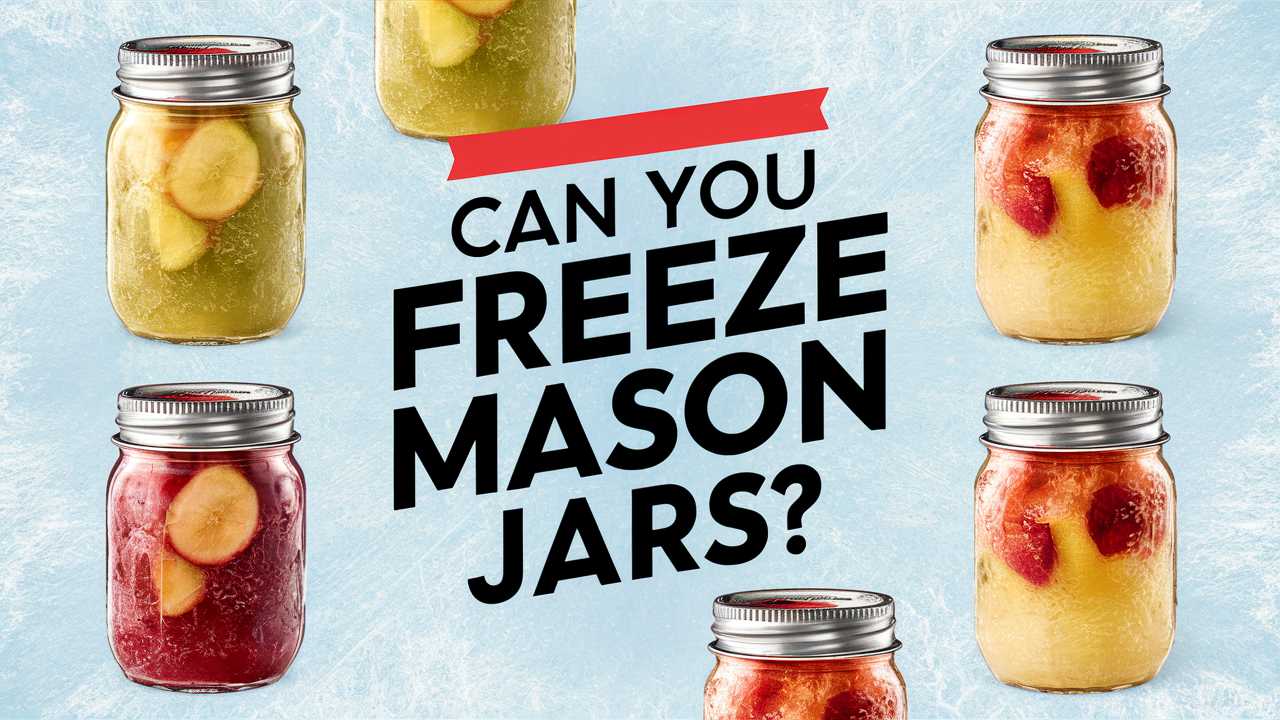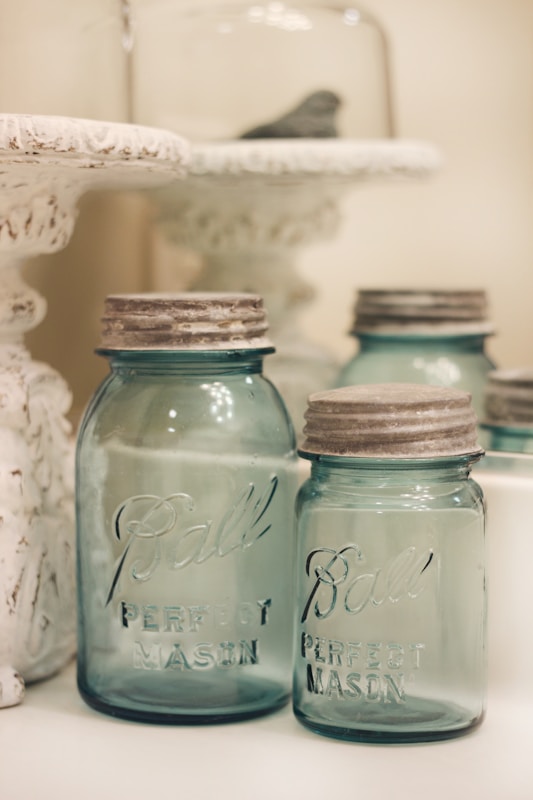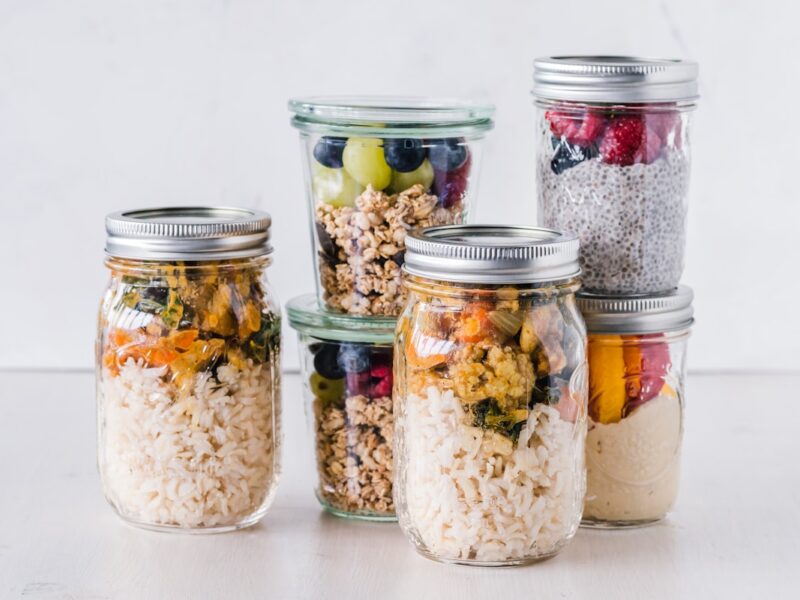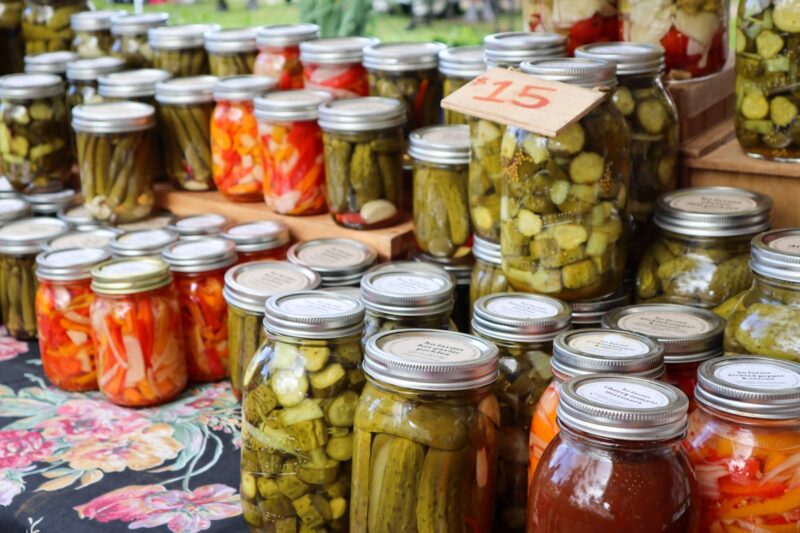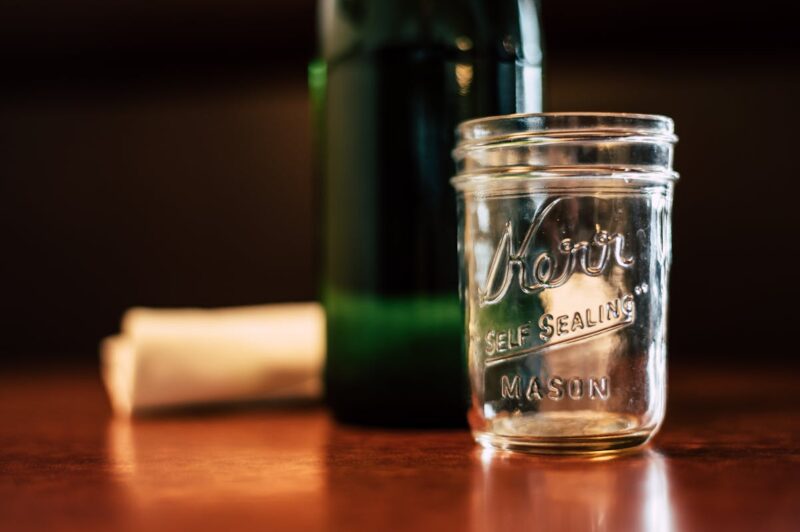For many home cooks and canning aficionados, Mason jars are an indispensable part of the food preservation toolkit. Unique in their design and multipurpose capabilities, these glass containers allow us to store a variety of foods—from sauces and preserves to soups and stews. As we seek ways to extend the life of our culinary creations, a popular question arises: can you freeze Mason jars?
This blog post aims to explore this topic in depth. We’ll not only answer the question but also provide a comprehensive guide on how to successfully freeze Mason jars, discuss the science behind freezing glass, share some helpful tips, and examine the pros and cons. Along the way, you’ll find anecdotes, insights, and inspiration to help you make the most of your Mason jar collection.
Can You Freeze Mason Jars?
The short answer is yes, you can freeze Mason jars. However, this requires some important considerations to ensure that your jars don’t crack, break, or risk contamination.
Glass versus Plastic
It’s essential to know that not all glass containers are created equal. While many glass jars are freezer-safe, Mason jars are specifically designed to withstand changes in temperature. They are thicker than standard glass containers, which helps reduce the likelihood of cracking during freezing. That said, certain precautions are necessary for safe freezing.
Recommended Types of Mason Jars
When choosing Mason jars for freezing, opt for those labeled as freezer-safe. This usually pertains to their thickness and the quality of glass used in their production. While wide-mouth jars are bulkier, they allow for easy packing and accessing of frozen contents, making them an excellent choice for soups and stews.
How to Freeze Mason Jars: A Step-by-Step Guide
If you’re ready to try your hand at freezing Mason jars, follow this step-by-step guide to ensure your success:
1. Choose the Right Jar
Select wide-mouth, freezer-safe Mason jars. Avoid using any jar with chips or cracks, as these can cause breakage during the freezing process.
2. Prepare the Food
Cook or prepare the food you plan to freeze. If you’re freezing liquid items like soups or smoothies, allow them to cool completely before transferring to the jar.
3. Leave Room for Expansion
When filling your jar, remember that liquids expand when frozen. Leave at least one inch of headspace to allow for this expansion. This may vary depending on the specific food being frozen, so always err on the side of caution.
4. Use Appropriate Lids
Never use regular canning lids for freezing. Instead, use freezer lids or plastic lids designed for freezer use. Standard lids may warp or pop off due to pressure changes during freezing.
5. Label the Jars
Don’t forget to label your jars with the contents and date they were frozen. This can save you from culinary mysteries later on!
6. Freeze
Place your filled jars in the freeze upright and allow them to freeze completely. You can organize them by category or usage date for easy access.
7. Thawing
When you’re ready to use your frozen food, transfer the jar to the refrigerator and allow it to thaw overnight. Thawing slowly will help prevent the glass from breaking. If you’re in a hurry, you can thaw the jar in cold water but avoid direct heat.
8. Reheating
After thawing, reheat the food in a saucepan over low heat or transfer it back to a microwave-safe dish. Avoid placing the frozen jar directly in hot water or the microwave, as sudden temperature changes may cause it to crack.
The Science of Freezing Glass
Understanding the science behind freezing glass can clarify why certain practices are necessary when freezing Mason jars. When glass is exposed to extreme temperature changes, it undergoes stress that can cause it to shatter. The thicker walls of Mason jars help mitigate this issue, as they are less susceptible to rapid temperature shifts. Furthermore, liquid expansion during freezing is a significant concern. Leaving adequate headspace is essential to safeguard the integrity of the glass.
Benefits of Freezing Mason Jars
1. Food Preservation
Freezing Mason jars can significantly extend the shelf life of your foods, allowing you to prepare meals in advance, stash away seasonal produce, or simply keep leftovers without waste.
2. Convenience
Having pre-cooked meals frozen and ready to go can bring ease to your weeknight dinner planning. Simply thaw, heat, and serve for a quick family meal.
3. Space-Saving Solution
Unlike bulky tupperware, Mason jars stack neatly and can be stored efficiently in your freezer. This is particularly beneficial for those with limited space.
4. Eco-Friendly Choice
By using glass jars, you reduce your reliance on single-use plastic containers. Glass is recyclable and doesn’t leach chemicals into your food.
The Drawbacks of Freezing Mason Jars
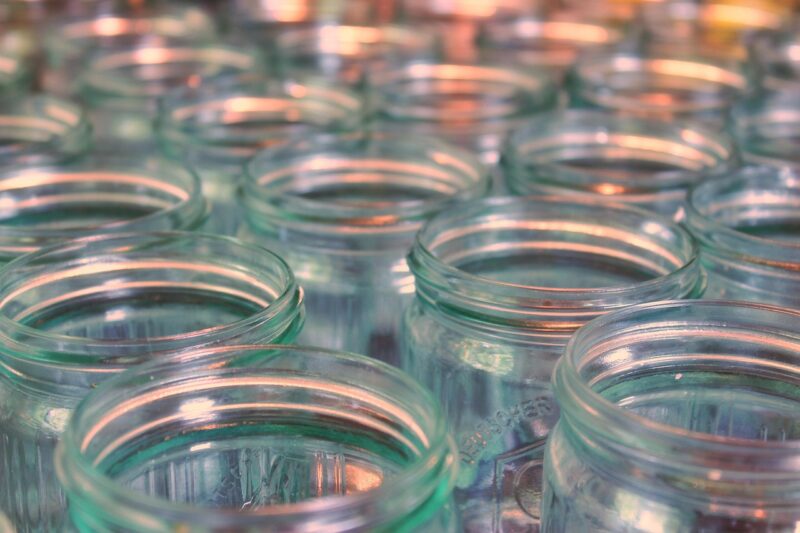
1. Risk of Breaking
Despite their sturdy design, there’s always a risk that glass can break if not handled carefully. Improper filling or sudden temperature changes can lead to mishaps.
2. Limited Expiry
Frozen foods do have a shelf life, which means you need to be vigilant about using the contents before they spoil, even in the freezer.
3. Thawing Time
Thawing glass jars can take longer than expected. If you’re in a rush, waiting for your food to thaw can be inconvenient.
Popular Foods to Freeze in Mason Jars
To make the most of your frozen Mason jar experience, consider the following items that freeze well:
Soups and Stews: These items are perfect for freezing, as they often contain liquids that expand without compromising the jar’s integrity.
Smoothies: Blend your favorite fruits and veggies, pour them into jars, and freeze. Just give them a good shake after thawing for a blended drink.
Sauces and Pesto: Homemade pasta sauces and pesto can easily be frozen in Mason jars—great for future meals.
Fruit and Veggie Blends: Chop or puree seasonal fruits and vegetables for easy additions to smoothies, baked goods, or sauces later on.
Creative Uses for Frozen Mason Jars
Beyond simple food storage, you can get creative with frozen Mason jars for various culinary experiences:
Frozen Mason Jar Meals
Layer ingredients for soups, stews, or casseroles directly in the jar. When ready to cook, simply pour everything into a pot for a quick and delicious meal.
Homemade Ice Cream or Sorbet
Use Mason jars to create your ice cream base, freeze it, and thrill your family with homemade frozen treats.
Infused Ice Cubes
Mix water with herbs, fruits, or even coffee, and pour them into Mason jars to create unique ice cubes for cocktails or beverages.
Tips for Successful Freezing
1. Avoid Hot Foods
Placing hot foods directly in a glass jar can increase the likelihood of breakage. Always allow cooked items to cool room temperature first.
2. Check Glass Integrity
Regularly inspect your jars for chips or cracks, replacing any that are damaged. This ensures your freezing endeavors are safe.
3. Be Mindful of Freezer Space
Plan your freezing strategy by considering how you can stack or arrange different jars for efficient use of space.
4. Experiment with Sizes
Consider varying your jar sizes to meet your specific freezing needs. Smaller jars can be great for sauces, while larger jars work well for peppy casseroles.
Understanding Mason Jars
Mason jars have been a staple in American kitchens since their invention by John Landis Mason in 1858. Initially designed for canning and preserving fruits and vegetables, these jars are now beloved not only for their functional use but also for their aesthetic appeal in home décor. Their design includes a wide mouth for easy filling and cleaning, a hermetic seal created by a two-part lid, and a thick glass construction that allows them to withstand changes in temperature.
Varieties of Mason Jars
Before we explore freezing options, it’s important to understand the different types of Mason jars available. The following are some of the most common types:
Regular Mouth Jars: Typically come in quart, pint, and half-pint sizes; ideal for jams, jellies, and pickled foods.
Wide Mouth Jars: These jars have a wider opening, making them easier to fill and clean. They are particularly useful for soups and stews.
Half Gallon Jars: Perfect for bulk items, half-gallon jars can be used for larger quantities of preserved goods.
Specialty Jars: These include jars designed for specific purposes, such as fermentation or canning different food textures.
My Personal Experience with Mason Jars
As a home cook, I have a soft spot for Mason jars. Whether I’m canning my summer bounty of tomatoes or repurposing them for homemade salad dressings, I’ve found that their versatility is unmatched. I remember one particular summer when I decided to freeze homemade peach preserves in Mason jars. It was a leap of faith at first, as freezing glass seemed like a risky endeavor. However, the joy of pulling out that preserved sunshine on a cold winter day convinced me that these jars have a lot to offer.
Recipes for Your Frozen Mason Jars
Rustic Butternut Squash Soup
Ingredients:
1 medium butternut squash, peeled and diced
1 onion, diced
3 cups vegetable broth
1 tsp garlic powder
Salt and pepper to taste
Instructions:
In a large pot, combine butternut squash, onion, broth, and seasoning.
Bring to a boil and then simmer for about 20 minutes, until squash is tender.
Blend the soup until smooth, let it cool, and fill into Mason jars.
Freeze, leaving one inch of headspace.
Simple Berry Smoothie
Ingredients:
1 cup mixed berries (fresh or frozen)
1 banana
1 cup spinach (optional)
1 cup almond milk
Instructions:
Blend all ingredients until smooth.
Pour into Mason jars and freeze.
When ready, thaw slightly and blend again for a refreshing smoothie.
Conclusion
In exploring whether you can freeze Mason jars, we’ve uncovered a world of possibilities for preserving your food and enjoying delicious meals throughout the year. From understanding the science behind freezing glass to practical steps for freezing various foods, you can confidently make the most of your Mason jar collection.


